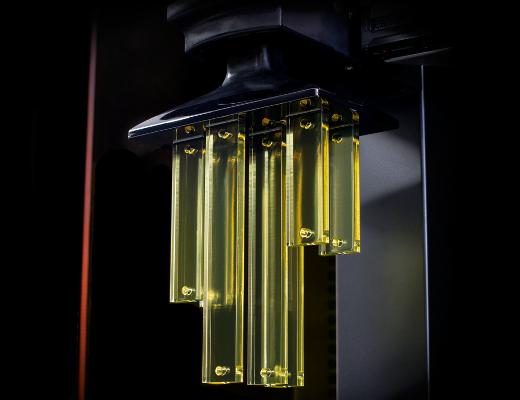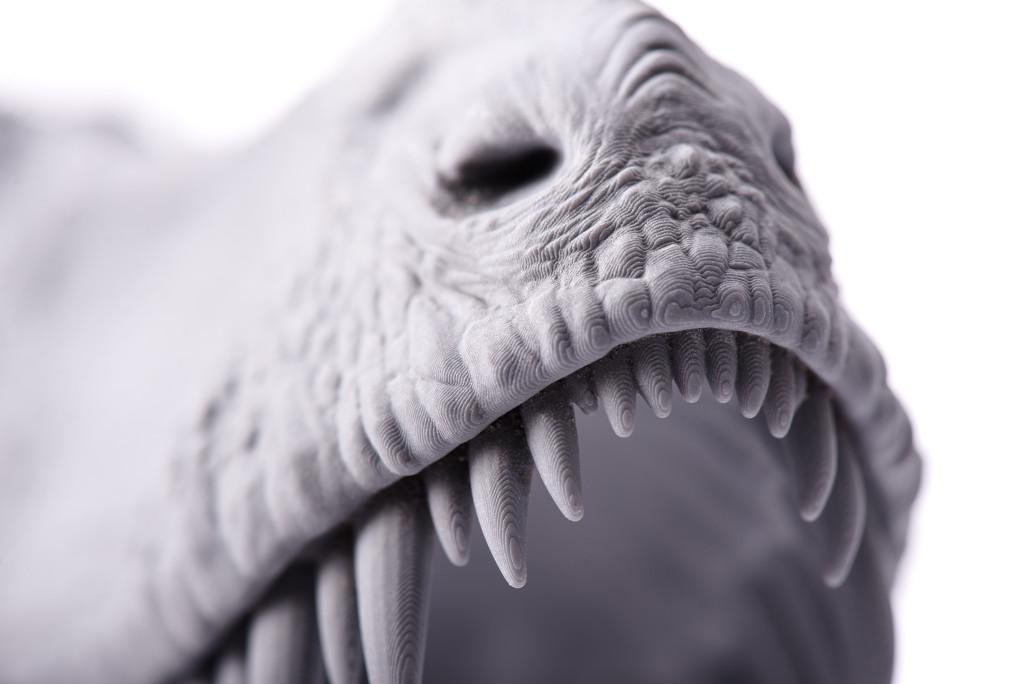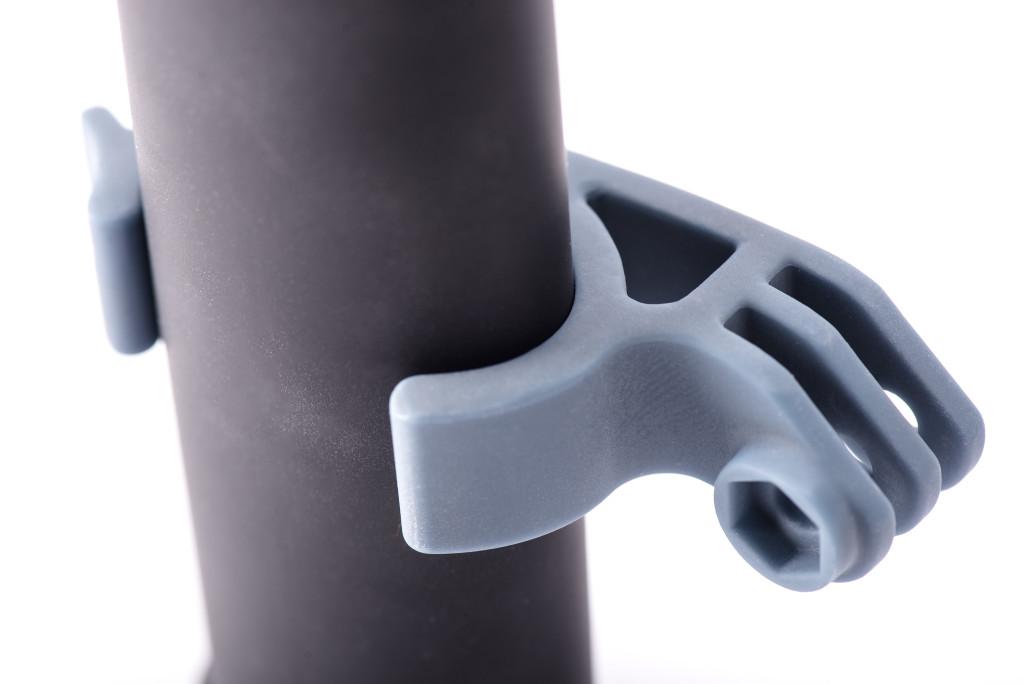 There’s been so much excitement surrounding Carbon and their super high speed Continuous Liquid Interface Production technology. Bit by bit, details have been given regarding new partners, beta testing, and more—and especially recently with the much awaited release of the Carbon M1 commercial 3D printer, leveraging that famous CLIP technology as well as a long list of new engineering-grade materials, and announcement that Carbon’s Dr. Joseph DeSimone will be presenting the opening keynote at next week’s Inside 3D Printing NYC. Just before that, we also discovered that Sculpteo, along with three other partners, was chosen as the only online 3D print service to own a Carbon 3D printer in its San Leandro facility in California.
There’s been so much excitement surrounding Carbon and their super high speed Continuous Liquid Interface Production technology. Bit by bit, details have been given regarding new partners, beta testing, and more—and especially recently with the much awaited release of the Carbon M1 commercial 3D printer, leveraging that famous CLIP technology as well as a long list of new engineering-grade materials, and announcement that Carbon’s Dr. Joseph DeSimone will be presenting the opening keynote at next week’s Inside 3D Printing NYC. Just before that, we also discovered that Sculpteo, along with three other partners, was chosen as the only online 3D print service to own a Carbon 3D printer in its San Leandro facility in California.
Now, we’re all very interested to hear the latest as Sculpteo fills us in, along with information on the new materials that Carbon announced recently. With CLIP technology being famous for using light and oxygen to cure a photosensitive resin as well as creating the dead zone that offers a thin layer of uncured resin between the window and the object, what is most stunning is the fact that this new technology also removes layering from the equation—thus accelerating speed exponentially.
“Designing for CLIP is like designing for many other 3D printing processes, however there are unique challenges, such as support generation and part orientation to make sure that we are providing the best possible quality when processing your parts,” states the Sculpteo team in their recent blog.
 While they will not be providing design guidelines for items like size limitations, text, wall thickness, hollowing, and support considerations until CLIP goes live, they are currently interested in sharing the four materials they are recommending, all in the new list of resins developed for the technology. Their hope is that the following information will help you with specific requirements for projects.
While they will not be providing design guidelines for items like size limitations, text, wall thickness, hollowing, and support considerations until CLIP goes live, they are currently interested in sharing the four materials they are recommending, all in the new list of resins developed for the technology. Their hope is that the following information will help you with specific requirements for projects.
EPU –Elastomeric Polyurethane is a rubbery stretchable material, offering elasticity despite a wide fluctuation of temperatures. It is known as a high performance polymeric elastomer, exhibiting elastic behavior under cyclic tensile and compressive loads. You should find it a good choice if you are fabricating gaskets, grommets, and items like flexible watertight seals. EPU is highly flexible and resilient, and also good for cushioning. It is available in Heather Grey only.
- Ultimate tensile strength 5 – 7 MPa
- Elongation at break 250 – 300%
- Young’s modulus 6 – 8 MPa
- Tear strength 15 – 20 kN/m
FPU – Flexible Polyurethane is a semi-rigid material offering good impact, abrasion, and fatigue resistance. This versatile material was designed to withstand repetitive stress such as hinging mechanisms and friction fits. Sculpteo recommends it as good for materials like injection-molded polypropylene, and see it as a good choice for 3D printing housewares, toys, rigid packaging and anything requiring lighter weight and flexibility. It’s tough and abrasion resistant, and available in Periwinkle only.
- Ultimate tensile strength 23 – 28 MPa
- Elongation at break 200 – 250%
- Young’s modulus 600 – 850 MPa
- Tear strength 35 – 39 J/m
RPU – Carbon offers a family of three RPUs, which are promised to act as the stiffest, most versatile polyurethane based resin. They perform well under stress, combining strength, stiffness, and toughness. These properties make RPU particularly useful for consumer electronics, automotive, and industrial components where excellent mechanical properties are needed. Specific examples for electronics, according to Sculpteo, would be computer mice, cell phones, or other electronic housings. They describe it as a ‘tough material with a high strength to weight ration or high temperature resistance.’ Manufacturers should find it suitable for automotive applications. RPU is available in black only.
- Ultimate tensile strength 40 – 55 MPa
- Elongation at break 90 – 140%
- Young’s modulus 1500 – 2000 MPa
- Tear strength 58 – 70 °C
PR – Prototyping Resin prints quickly, has excellent resolution, and performs well enough to withstand moderate functional testing. Sculpteo recommends this resin for small to medium parts in order to meet requirements for tolerance as well as precision and patterning, and it should be suitable in making components for auto, medical and consumer electronics. This is a rigid and low-strength resin which is recommended as perfect for detailed prototyping. It is not resistant to high temperatures, and not ‘particularly strong’, but Sculpteo does point out that it offers great resolution and also requires the least amount of post processing. It is also available in multiple colors: Cyan, Magenta, Yellow, Black, Grey, and White.
- Ultimate tensile strength 26 – 32 MPa
- Elongation at break 15 – 28%
- Young’s modulus 600 – 950 MPa
- Impact strength 24 – 28 J/m
How exciting not just to have such an incredible new technology coming about, but also to have a list of extremely versatile new materials to go with it. To find out more about CLIP materials, check out additional information from Sculpteo. What are your thoughts on these different materials? Discuss in the Sculpteo CLIP 3D Printing Resins forum over at 3DPB.com.
[Images: Sculpteo]Subscribe to Our Email Newsletter
Stay up-to-date on all the latest news from the 3D printing industry and receive information and offers from third party vendors.
You May Also Like
Profiling a Construction 3D Printing Pioneer: US Army Corps of Engineers’ Megan Kreiger
The world of construction 3D printing is still so new that the true experts can probably be counted on two hands. Among them is Megan Kreiger, Portfolio Manager of Additive...
US Army Corps of Engineers Taps Lincoln Electric & Eaton for Largest 3D Printed US Civil Works Part
The Soo Locks sit on the US-Canadian border, enabling maritime travel between Lake Superior and Lake Huron, from which ships can reach the rest of the Great Lakes. Crafts carrying...
Construction 3D Printing CEO Reflects on Being Female in Construction
Natalie Wadley, CEO of ChangeMaker3D, could hear the words of her daughter sitting next to her resounding in her head. “Mum, MUM, you’ve won!” Wadley had just won the prestigious...
1Print to Commercialize 3D Printed Coastal Resilience Solutions
1Print, a company that specializes in deploying additive construction (AC) for infrastructure projects, has entered an agreement with the University of Miami (UM) to accelerate commercialization of the SEAHIVE shoreline...
































